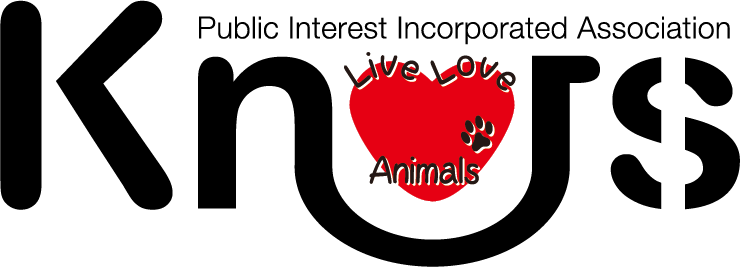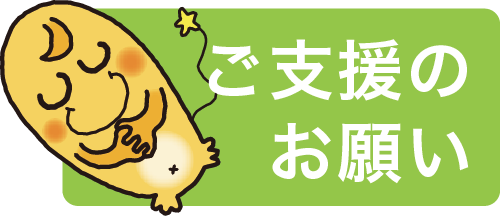CHAIR & ORGANISER MESSAGE

Taisei HOSOIDO,
Veterinarian,Occupational Director, Japan Veterinary Medical Association (JVMA),
President, VR ENGINE Inc.
![]()
A Wide-Ranging Response is Required in Animal Care
The social perception of veterinarians has differed substantially in different eras and in different regions. However, I think that the role of veterinarians remains extremely important for any era and in every region. Looking at the history of animal medical care in Japan, from the standpoint of making a social contribution, it is only in recent years that a high value has come to be placed on animal medical care.
When we look back at the changes in the roles that society has required of veterinarians, we see that in the first half of the 20th century, their biggest single role was that of warhorse management, etc. Then, from the confusion of the immediate postwar years to the period of recovery, from the standpoint of improving food production and food security (and especially of providing animal protein in the diet) veterinarians came to be perceived for the contribution they made to society in supporting the raising of livestock.
From the middle of the Showa Era (circa 1960) and into the present Heisei Era (1989~), with the progression of research and development in the field of chemical products (including medical products and clothing), and genetic research, the list of important tasks undertaken by veterinarians has come to include ‘participation in various researches and tasks directly connected to people’s lives and health’. These include the public health duties of preventing and controlling zoonotic infections and controlling food hygiene.
Moreover, in recent years, veterinarians have been required to respond to matters related to wildlife, which has become a major theme within the broader issue of preserving the global environment, as well as to the changing position of family animals in Japan’s present aging society with its low birthrate.
However, when we consider whether or not the roles of veterinarians are clearly recognized by society we find that, due to a tendency to broadly define things related to all kinds of animal matters as “veterinary”, it is rather difficult to convey the specific roles played by veterinarians to the general public.
In this workshop, we will attempt to describe “veterinary medical care” as “animal medical care”. We will hear reports from veterinarians practicing in each field about how animal medical care should be conducted in the wildlife field (and its significance), the roles of veterinarians in the public health field and in industrial animal medical care, and family animal medical care under the current situation. From these reports we will consider possible responses for the future.
Animal Medical Care for Protecting Ecosystem Health
Shin-ichi Hayama/PhD, Veterinarian, Associate Professor of Wildlife Medicine,
Dept. of Veterinary Science, Nippon Veterinary and Life Science University
![]()
Since the beginning of modernization, the relationship between people and wildlife has undergone a transformation and this in turn has been accompanied some major social problems. Examples of these problems include damage to agriculture, forestry and fisheries and physical injury to people caused by wild animals, the negative effects of invasive or introduced species on ecosystems, and the transmission of emerging infectious diseases by wild animals. Moreover, these problems are growing more serious year by year. On the other hand, many species of wild animals are threatened with extinction as a result of human activity, and both the extinction rates and the speed of those extinctions are unprecedented in the history of life on earth.
Collectively, I refer to these problems as “wildlife issues”, and I would like to point out that they constitute an important theme that we need to solve in the context of global environmental issues. Since these problems bear directly on people themselves, changes in human society are a prerequisite to achieving their solutions. But at the same time, they need to be addressed by professionals armed with a detailed knowledge of biology, including knowledge with respect to wild animals, and also with technology.
The public has considerable expectations of animal medical care providers such as veterinarians who deal with all kinds of animals in a professional capacity, and these animal medical care providers are regarded as having a social obligation to help achieve solutions to various animal-related issues. In order to respond to social demands of this kind, the Japan Veterinary Medical Association established a Wildlife Management Committee in 2001, and this committee has made recommendations regarding both the roles veterinarians should play and the future direction of systemic reforms.
In my talk I would like to introduce some approaches towards solving wildlife issues based on the JVMA’s discussions and I would also like to talk about the significance of animal medical care providers being involved with wildlife issues from a variety of standpoints.
Animal Medical Care Requires Diverse Services – Veterinarians in Public Administration, Particularly in the Public Health Field
Mikio SUGIHARA,/Assistant Department Chief and Animal Health Section Chief, Health and Welfare Dept., Consumer Affairs Bureau, Public Health Division, Hyogo Prefectural Government
![]()
In public administration, veterinary work is carried out mainly in the agriculture and forestry field and the public health field. In my own field of public health, there are currently 134 veterinarians on the staff of Hyogo Prefectural Government.
I suppose there are a lot of people who are unable to visualize veterinarians working in public health, but the fact is they are indeed working in many capacities in this field.
The places where veterinarians in public administration work include public health centers, meat hygiene inspection centers, animal protection centers, and life science and health research centers.
At public health centers, veterinarians are mainly responsible for food hygiene and environmental health, etc. They provide on-the-spot training at food-related facilities and they also work on preventing occurrences and reoccurrences of food poisoning. In the environmental health field, they provide workplace training at business facilities such as beauty parlors and barbershops, hotels, etc., and they conduct training concerning hygiene measures. At meat hygiene inspection centers, in order to ensure the safety of meat and poultry for public distribution, veterinarians are engaged in inspection work as official inspectors. For animal protection centers, they carry out their work from the standpoint of protecting pet animals from harm and preventing animals from harming people, and their activities include providing on-the-spot training at pet shops. At life science and health research centers, they carry out wide-ranging inspections and research into viruses and bacteria, etc.
At the time of the Great East Japan Earthquake, in order to help support the activities of Fukushima Animal Rescue Headquarters, Hyogo Prefecture dispatched many of the veterinarian personnel employed at its animal protection centers to Fukushima Prefecture.
As the above examples illustrate, public health veterinarians in Hyogo are working in close contact with the public in diverse fields making use of their professional knowledge and experience in order to improve the safety and security of the prefecture’s citizens.
The Current Situation and Future of “Family Animal” Medical Care ~ A Response to Help Pets Move from Being Members of the Family to Members of Society ~
Taisei HOSOIDO,/Veterinarian,
Occupational Director, Japan Veterinary Medical Association (JVMA),
President, VR ENGINE Inc.
![]()
In recent years, pets have become widely recognized to be members of the family and members of society, and this trend has been accompanied by strong demands to provide pets with appropriate and high-quality “family animal” medical care.
In the background, I believe that the main reasons for this are that, in recent years, people have been living in a more mature economic environment. Daily life in Japanese society has been heading towards a structure based on lower birthrates and an aging population with the result that many people have begun to seek peace of mind through interacting with animals.
The kinds of mutual mental and physical involvement that occur as a result of this interaction are known as human-animal bonds (HAB). Since the 1970s, various researchers, centered on the Delta Society, have been scientifically investigating and studying these mutual effects and popularizing them among the general public as well as in academic circles. In Japan too, the concept of placing value on HAB has spread to many people across society, not only in the veterinary and animal medical care fields but also to those involved in human medical care, welfare and education, as well as to pet owners.
In recent years, with the recognition of pet owners and of society in general, the status of pets has been changing from that of ‘pet animals’ to – so called – ‘companion animals’, and now to ‘family animals’. In line with this development the demand has arisen for a more wide-ranging response to providing family animal medical care. In order to meet such diversified requests with an organized response, “nighttime emergency care systems” and “introductory medical care systems through cooperation between the three parties of pet owners, home doctors and secondary care facilities” are being established and developed throughout Japan centered on veterinarians who belong to the veterinary associations in each region.
Also, in the future it will become more and more important for the veterinarians and veterinary nurses that provide medical care for family animals to play a role in supporting a convivial society for the coexistence of people and animals. This needs to be achieved through such things as popularizing the importance of pet owners carrying out proper training and teaching manners (so that the animals they raise can effortlessly co-exist with people and live happily as “members of society”), in addition to providing medical care, preventing diseases and detecting the presence of chronic diseases at an early stage through regular examinations.
The realization of a wonderful coexistence between people, animals and the natural world is a major proposition that will be required of future society. To begin with, pet owners and other interested parties must do their very best, and do so together, to ensure that the family animals living among us are recognized as “members of society” by as many people as possible.
Main Roles Required of Veterinarians Engaged in Farm Animal Practice
Akira Yokoo /Assistant Manager,
Division for Planning, Research and Training, National Agricultural Insurance Association (NOSAI)
![]()
In this workshop we are going to talk about veterinary practice with respect to farm animals, which is something that requires a wide range of responses. At present, the main roles required of veterinarians engaged in farm animal practice are as shown in the following table. Since these are practicing veterinarians, naturally their work centers on the medical care of livestock, but because these veterinarians are also involved in various food production activities that come under the heading of ‘daily husbandry’ or ‘animal husbandry’, the roles they are required to play have been growing steadily larger over the past few years.
In line with recent outbreaks of BSE and foot-and-mouth disease and with the transfer of pharmaceutical residues and pesticide residues to a positive list system, the role played by veterinarians who can guarantee the safety of livestock food products is becoming more and more important. This is because only the veterinarians engaged in farm animal practice who work at the farming site can make appropriate use of animal-use drugs, and the dispatch of safe products can only be realized if information about washout periods and drug-use prohibition periods can be appropriately provided to livestock owners or producers.
Table: Main Roles Required of Veterinarians Engaged in Farm Animal Practice
| Role | Details |
| Stabilization of livestock farming.
Ensuring a stable supply of safe and good-quality livestock products. Preventing common infections that are common to people and animals. Supervision of emerging and re-emerging infectious diseases. |
Medical care of livestock and disease prevention, management consultation, successor measures, employee education, cooperation with concerned bodies, support for increasing production with self-supplied feed.
Use of appropriate medicines, maintaining a washout period (positive list system). Early detection of infected livestock and appropriate treatment, providing information to concerned organizations and livestock owners. Discovering abnormalities at the farming site, such as foot-and-mouth disease, avian influenza, etc., and informing concerned organizations. |
Moreover, many infections that are common to people and animals are said to originate in farm animals, so the role of veterinarians in examining farm animals on a daily basis is important.
In addition, regarding the response when monitoring infectious diseases such as those designated as infectious by law (and requiring official reporting) and when reporting communicable diseases, etc., including foot-and-mouth disease and BSE, the first step in taking effective countermeasures is for the farm animal veterinarian who works on the frontline at the farming site to discover the infection and report it to the Livestock Hygiene Service Center.

